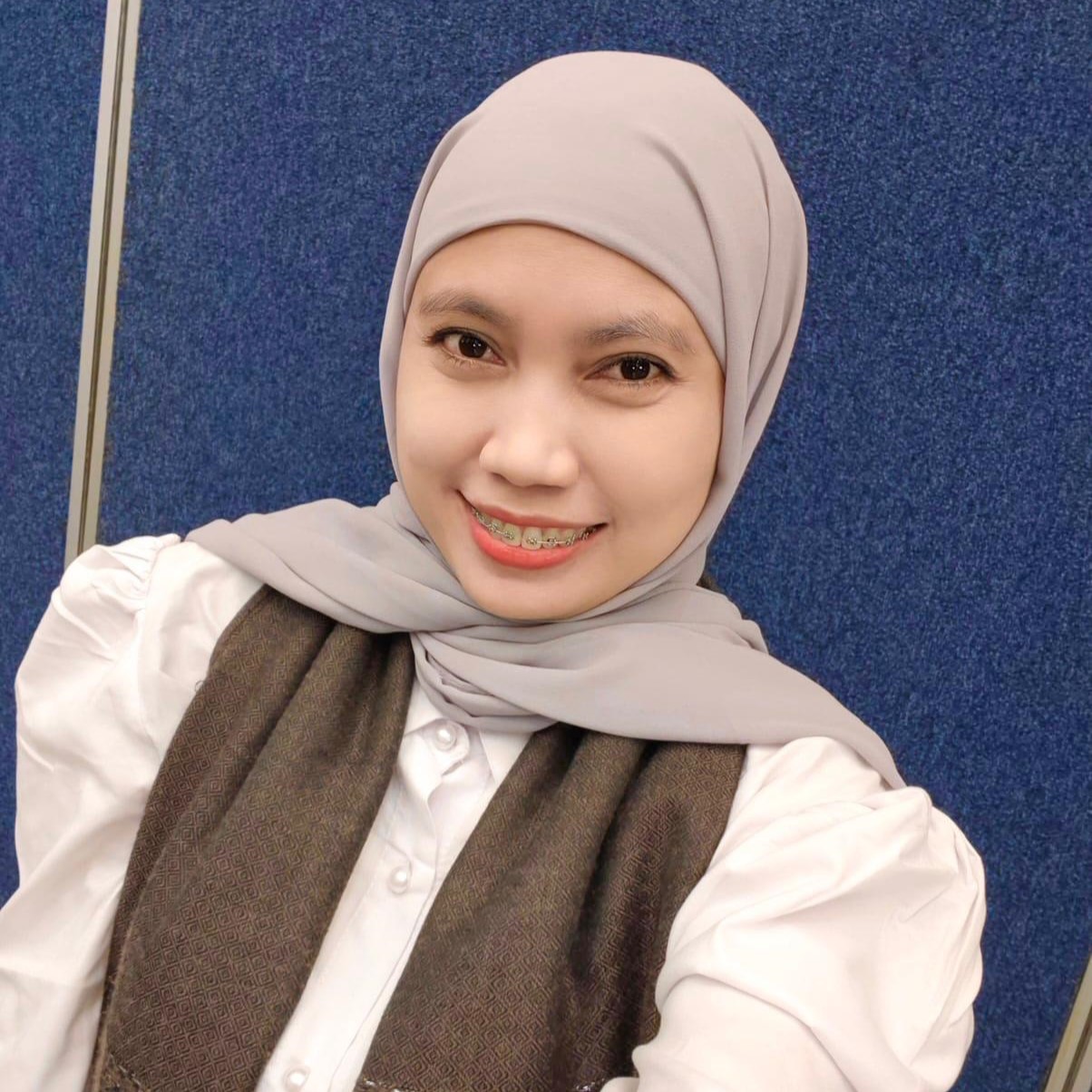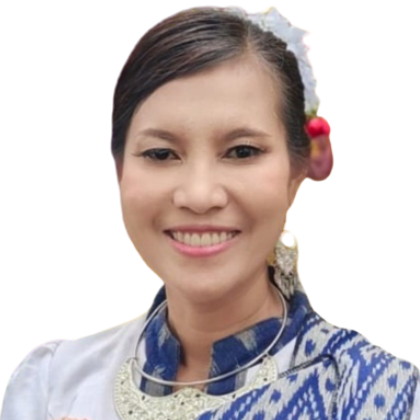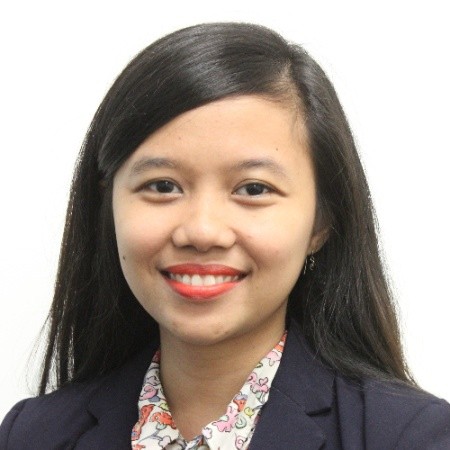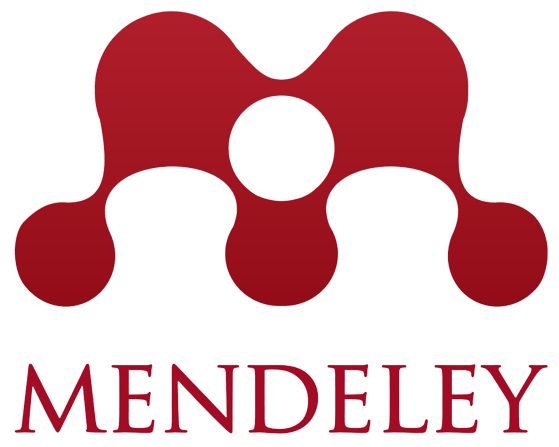Correlation Analysis of Individual Factors and Community Factors on Exclusive Breastfeeding by Infant Mothers in the Working Area of Puskesmas X Tuban

Downloads
Background: Decreasing Infant Mortality Rate (AKB) and improving nutritional status are indicators of health development in Indonesia. This is closely related to exclusive breastfeeding of infants. In Tuban Regency, the achievement of exclusive breastfeeding decreased from 2019 to 2020, with an achievement of 79.5% to 76.7%. Success in increasing the achievement of exclusive breastfeeding involves several factors, namely individual factors and community factors in the mother's neighborhood.
Objectives: Analyzed the influence of variables of maternal characteristics, attitudes, beliefs, social norms, stigma, and culture in the mother's living environment with variables of exclusive breastfeeding actions on infants in the Working Area of Puskesmas X Tuban.
Methods: Conducted a cross-sectional design observational study. The sample for this study consisted of 110 mothers with babies aged 7-12 months. Individual factors and community factors served as independent variables, while the act of exclusive breastfeeding in infants was the dependent variable. The test utilized was a binary logistic regression test.
Results: The result revealed several factors that were pertinent to the provision of exclusive breastfeeding. In individual factors, there was a significant association with age subvariable (0,005); expenses (0,038); and knowledge (0,006). Meanwhile, community factors showed a significant association with cultural subvariables (0,006). Exclusice breastfeeding by the baby was found to be correlated with the mother’s condition and the environment around the mother. Inadequate conditions, such as iuffcient family knowledge and income, had an impact on exclusive breastfeeding. Additionally, the culture in the surrounding environment posed as an obstacle for mothers in providing excluuve breastfeeding to ther babies.
Conclusions: The practice of exclusive breasfeeding by mothers to babies is closely associated with various factor, including individual factors and community factors.
Afriani, R. and Aisyiyah (2016) ‘Analisis Dampak Pernikahan Dini pada Remaja Putri di Desa Sidoluhur Kecamatan Godean Yogyakarta’, Prosiding Seminar Nasional & Internasional, 1(1), pp. 3–13. Available at: https://jurnal.unimus.ac.id/index.php/psn12012010/article/view/2102 (Accessed: 22 November 2023).
Astuti, A.P. and Adimayanti, E. (2016) ‘Gambaran Pengetahuan Ibu Tentang Cara Pemberian Asi Eksklusif yang Baik pada Bayi Usia 0-6 Bulan di Desa Gogodalem Barat Kecamatan Bringin Kabupaten Semarang’, Jurnal Keperawatan Anak, 3(1), pp. 1–4. Available at: https://jurnal.unimus.ac.id/index.php/JKA/article/view/3968 (Accessed: 22 November 2023).
A’yun, Q., Ismail, N. and Maidar (2021) ‘Hubungan Social Support, Breastfeeding Self- Efficacy Dengan Pemberian Asi Eksklusif Di Kota Banda Aceh’, Jurnal Aceh Medika, 5(2), pp. 49–60. Available at: http://jurnal.abulyatama.ac.id/index.php/acehmedika/article/view/2433 (Accessed: 21 November 2023).
BPS, BKKBN, & Kementerian Kesehatan. 2018. Survei Demografi dan Kesehatan Indonesia 2017. Jakarta.
Damopolii, T.A.J., Kundre, R. and Bataha, Y. (2015) Hubungan Standar Pelayanan Antenatal Care dan Kebijakan Program Pelayanan Antenatal Care dengan Pengetahuan Antenatal Care Terintegrasi di WIlayah Kerja Puskesmas Gogagoman Kota KotaMobagu, Jurnal Keperawatan. Available at: https://doi.org/https://doi.org/10.35790/jkp.v3i2.9278.
Darlian, L. et al. (2017) ‘Faktor-Faktor yang Berhubungan dengan Lama Pemberian ASI Eksklusif pada Bayi (0-6 Bulan) di Wilayah Kerja Puskesmas Mokoau Kota Kendari’, AMPIBI: Jurnal Alumni Pendidikan Biologi, 2(1), pp. 11–20. Available at: https://doi.org/10.36709/AMPIBI.V2I1.5052.
Dewi, T. (2021) ‘Pengetahuan, Kepercayaan dan Tradisi Ibu Menyusui Berhubungan dengan Pemberian ASI Eksklusif’, Jurnal Keperawatan, 13(1), pp. 231–240. Available at: https://doi.org/10.32583/KEPERAWATAN.V13I1.1563.
Dinas Kesehatan. 2020. Profil Kesehatan Jawa Timur 2020. Surabaya: Dinas Kesehatan Provinsi Jawa Timur.
Dinas Kesehatan. 2020. Profil Kesehatan Jawa Timur 2020. Tuban: Dinas Kesehatan Kabupaten Tuban.
Dinas Kesehatan. 2019. Profil Kesehatan Jawa Timur 2019. Tuban: Dinas Kesehatan Kabupaten Tuban.
Dinas Kesehatan. 2018. Profil Kesehatan Jawa Timur 2018. Tuban: Dinas Kesehatan Kabupaten Tuban.
Fadlliyyah, R. et al. (2019) ‘Determminan Faktor yang Berpengaruh pada Pemberian ASI Eksklusif di Indonesia’, Jurnal Ilmu Kesehatan Masyarakat, 15(1), pp. 37–42. Available at: https://doi.org/10.19184/IKESMA.V15I1.14415.
Fakhidah, L.N. and Palupi, F.H. (2018) ‘Analisis Faktor yang Mempengaruhi Pemberian ASI Eksklusif’, Jurnal Kebidanan, 10(02), pp. 181–192. Available at: https://doi.org/10.35872/JURKEB.V10I02.291.
Fallon, V. et al. (2017) ‘The emotional and practical experiences of formula-feeding mothers’, Maternal & child nutrition, 13(4). Available at: https://doi.org/10.1111/MCN.12392.
Hanum, N. (2018) ‘Pengaruh Pendapatan, Jumlah Tanggungan Keluarga Dan Pendidikan Terhadap Pola Konsumsi Rumah Tangga Nelayan Di Desa Seuneubok Rambong Aceh Timur’, Jurnal Samudra Ekonomika, 2(1), pp. 75–84. Available at: https://doi.org/10.1234/JSE.V2I1.779.
HS, S.A.S., Sulaeman, S. and Indriani (2018) ‘Pengaruh Paket Edukasi Tanda Bahaya Kehamilan Melalui Media Booklet, Audiovisual, dan Kombinasi terhadap Pengetahuan dan Sikap Ibu Hamil’, Jurnal Wacana Kesehatan, 3(2), pp. 356–372. Available at: https://doi.org/10.52822/JWK.V3I2.83.
Ida and Irianto, J. (2015) ‘Pemberian Dukungan Untuk Menyusui Asi Eksklusif Enam Bulan Di Puskesmas Kemiri Muka, Depok, Jawa Barat Tahun 2011’, Jurnal Kesehatan Reproduksi, 6(1), pp. 19–30. Available at: https://www.neliti.com/id/publications/107803/ (Accessed: 22 November 2023).
Jat, T.R., Ng, N. and San Sebastian, M. (2011) ‘Factors affecting the use of maternal health services in Madhya Pradesh state of India: A multilevel analysis’, International Journal for Equity in Health, 10(1), pp. 1–11. Available at: https://doi.org/10.1186/1475-9276-10-59/COMMENTS.
Kim, J.H., Fiese, B.H. and Donovan, S.M. (2017) ‘Breastfeeding is Natural but Not the Cultural Norm: A Mixed-Methods Study of First-Time Breastfeeding, African American Mothers Participating in WIC’, Journal of nutrition education and behavior, 49(7 Suppl 2), pp. S151-S161.e1. Available at: https://doi.org/10.1016/J.JNEB.2017.04.003.
Komninou, S. et al. (2017) ‘Differences in the emotional and practical experiences of exclusively breastfeeding and combination feeding mothers’, Maternal & child nutrition, 13(3). Available at: https://doi.org/10.1111/MCN.12364.
Mardhiyah, A. et al. (2018) ‘Analisis Peran Keluarga terhadap Perilaku Pemberian ASI Eksklusif pada Bayi Usia 6-24 Bulan di Wilayah Kerja Puskesmas Way Halim Kota Bandar Lampung’, Jurnal Majority, 7(3), pp. 106–114. Available at: https://juke.kedokteran.unila.ac.id/index.php/majority/article/view/2061 (Accessed: 22 November 2023).
Mawaddah, S. (2018) ‘Hubungan Inisiasi Menyusu Dini Dengan Pemberian Asi Ekslusif Pada Bayi’, JURNAL INFO KESEHATAN, 16(2), pp. 214–225. Available at: https://doi.org/10.31965/infokes.vol16.iss2.185.
Notoatmodjo, S. 2010. Pendidikan dan Perilaku Kesehatan. Jakarta: Rineka Cipta.
Patterson, J.A. et al. (2020) ‘Outpatient Breastfeeding Champion Program: Breastfeeding Support in Primary Care’, Breastfeeding Medicine: the official journal of the Academy of Breastfeeding Medicine, 15(1), pp. 44–48. Available at: https://doi.org/10.1089/BFM.2019.0108.
Rahmawati, M.D. (2010) ‘Faktor-faktor yang Mempengaruhi Pemberian ASI Eksklusif pada Ibu Menyusui di Kelurahan Pedalangan Kecamatan Banyumanik Kota Semarang’, Jurnal Kesehatan Kusuma Husada, 3(1), pp. 9–17. Available at: https://jurnal.ukh.ac.id/index.php/JK/article/view/17 (Accessed: 22 November 2023).
Ruaida, N. (2018) ‘Gerakan 1000 Hari Pertama Kehidupan Mencegah Terjadinya Stunting (Gizi Pendek) di Indonesia’, GLOBAL HEALTH SCIENCE, 3(2), pp. 139–151. Available at: https://doi.org/10.33846/GHS.V3I2.245.
Sari, I. et al. (2018) ‘Faktor-Faktor yang Mempengaruhi Pemberian ASI Eksklusif pada Ibu Nifas di Wilayah Kerja Puskesmas Bontobahari Kabupaten Bulukumba’, Jurnal Kesehatan Panrita Husada, 3(1), pp. 53–67. Available at: https://doi.org/10.37362/JKPH.V3I1.9.
Setyaningsih, F.T.E. and Farapti, F. (2019) ‘Hubungan Kepercayaan dan Tradisi Keluarga pada Ibu Menyusui dengan Pemberian ASI Eksklusif di Kelurahan Sidotopo, Semampir, Jawa Timur’, Jurnal Biometrika dan Kependudukan, 7(2), p. 160. Available at: https://doi.org/10.20473/JBK.V7I2.2018.160-167.
Simanungkalit, H.M. (2018) ‘Status Pekerjaan Dan Pengetahuan Ibu Menyusui Terhadap Pemberian ASI Eksklusif’, JURNAL INFO KESEHATAN, 16(2), pp. 236–244. Available at: https://doi.org/10.31965/infokes.vol16.iss2.222.
Snyder, K. et al. (2021) ‘Examining supports and barriers to breastfeeding through a socio-ecological lens: a qualitative study’, International Breastfeeding Journal, 16(1), pp. 1–8. Available at: https://doi.org/10.1186/S13006-021-00401-4/FIGURES/2.
Soetjiningsih. 2012. Tumbuh Kembang Anak Edisi 2. Jakarta: EGC; 2013. Menyusui. Yogyakarta: Banyu Media.
Suci, E.S. et al. (2018) Influential Factors against Exclusive Breast Feeding In Working Area of Wania District Health Center of Mimika Regency, International Journal of Science and Healthcare Research (www.ijshr.com). Available at: www.ijshr.com.
Syamsuriyati, S. et al. (2019) ‘Early Initiation of Breastfeeding and Exclusive Breastfeeding: A Case Study of Breastfeeding Mothers in Takalar District’, Journal of Pharmacy and Nutrition Sciences, 9(4), pp. 200–204. Available at: https://doi.org/10.29169/1927-5951.2019.09.04.1.
Talbert, A. et al. (2020) ‘Exclusive Breastfeeding in First-Time Mothers in Rural Kenya: A Longitudinal Observational Study of Feeding Patterns in the First Six Months of Life’, International Breastfeeding Journal, 15(1). Available at: https://doi.org/10.1186/s13006-020-00260-5.
Teketo Kassaw, G.M. and Aychiluhim, M. (2015) ‘Antenatal Care Service Utilization and its Associated Factors among Mothers who Gave Live Birth in the Past One Year in Womberma Woreda, North West Ethiopia’, Epidemiology: Open Access, s2. Available at: https://doi.org/10.4172/2161-1165.s2-003.
Walingo, M.K. and Mutuli, L.A. (2014) ‘Influence of maternal beliefs, attitude, perceived behavior on breast-feeding among post partum mothers in Western Kenya’, Pakistan Journal of Nutrition, 13(5), pp. 250–254. Available at: https://doi.org/10.3923/PJN.2014.250.254.
Werdani, K.E. et al. (2019) ‘Keyakinan Diri dan Pandangan Masyarakat terhadap Pemberian ASI Eksklusif pada Ibu Muda di Kabupaten Boyolali’, Seminar Nasional Kesehatan Masyarakat UMS Auditorium Muh. Djazman [Preprint]. Available at: http://publikasiilmiah.ums.ac.id/handle/11617/11852 (Accessed: 22 November 2023).
WHO 2017 Guideline: Proctecting, Promoting, and Supporting Breastfeeding in Facilities Providing Maternity and Newborn Services. Available at: https://apps.who.int/iris/bitstream/handle/10665/259386/9789241550086-eng.pdf.
Widiyanto, S., Aviyanti, D. and A, M.T. (2012) ‘Hubungan Pendidikan dan Pengetahuan Ibu tentang ASI Eksklusif dengan Sikap terhadap Pemberian ASI Eksklusif’, Jurnal Kedokteran Muhammadiyah, 1(1). Available at: https://jurnal.unimus.ac.id/index.php/kedokteran/article/view/743 (Accessed: 22 November 2023).
Yurna, E.A., Arifin, S. and Yuliana, I. (2020) ‘Hubungan Motivasi, Pendidikan, Kepercayaan serta Usia dengan Perilaku Pemberian ASI Eksklusif di Wilayah Kerja Puskesmas Pekapuran Raya Banjarmasin’, Homeostasis, 3(2), pp. 301–308. Available at: https://ppjp.ulm.ac.id/journals/index.php/hms/article/view/2278 (Accessed: 21 November 2023).
Copyright (c) 2024 Nola Agatha Tri Anggraeni Febrianti

This work is licensed under a Creative Commons Attribution-ShareAlike 4.0 International License.
Media Gizi Kesmas by Unair is licensed under a Creative Commons Attribution-ShareAlike 4.0 International License.
1. The journal allows the author(s) to hold the copyright and to retain the publishing right of the article without restrictions.
2. The legal formal aspect of journal publication accessibility refers to Creative Commons Attribution-Share-Alike (CC BY-SA).
3. The Creative Commons Attribution-Share-Alike (CC BY-SA) license allows re-distribution and re-use of a licensed work on the conditions that the creator is appropriately credited and that any derivative work is made available under "the same, similar or a compatible license”. Other than the conditions mentioned above, the editorial board is not responsible for copyright violations.



















